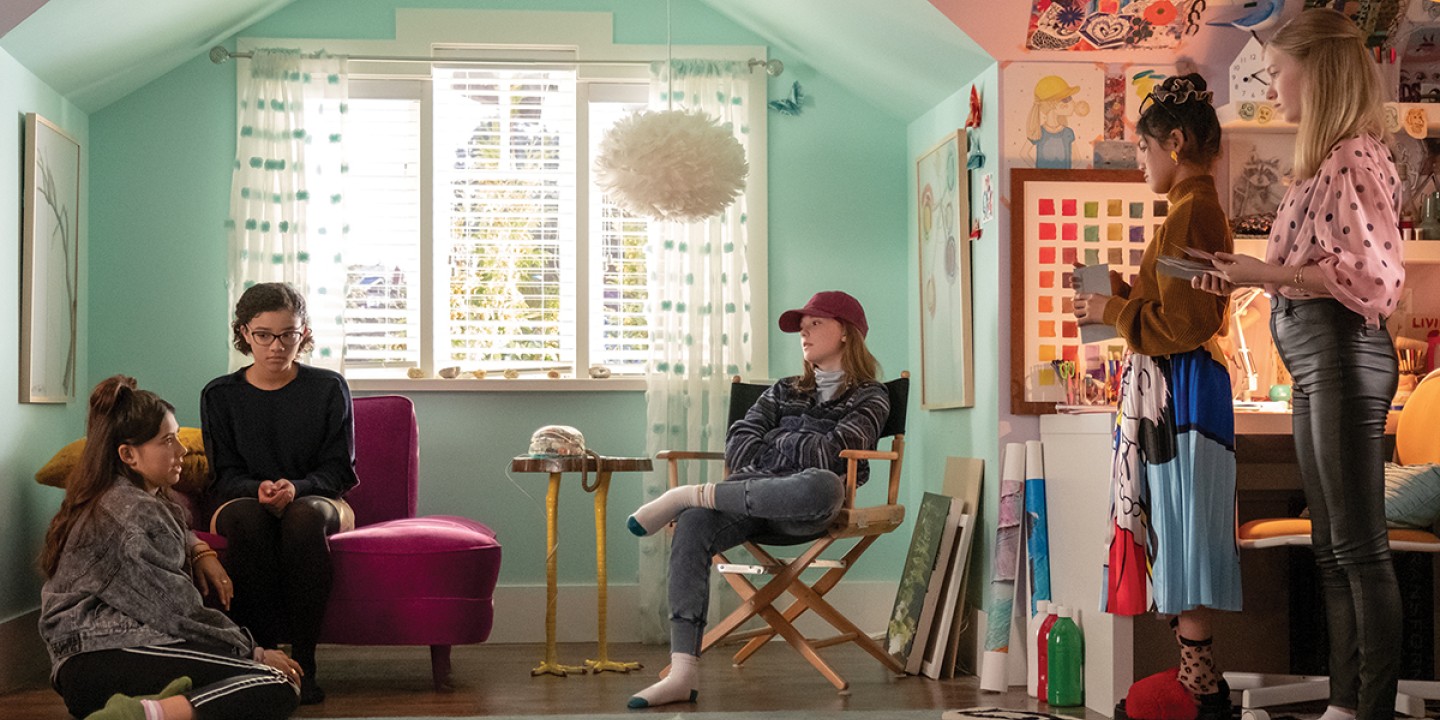The collective wisdom that emerges from The Baby-Sitters Club
In the Netflix reboot, 12-year-old girls model collaborative leadership.

The new Netflix adaptation of The Baby-Sitters Club provides comfort nostalgia for adult viewers who grew up on the original series of young adult novels. It also offers something exhilaratingly fresh and wonderful: a vision of collaborative leadership and friendship centered around young women.
If you grew up in the 1980s and ’90s, especially if you identified as a girl, you probably know the premise of the series: a group of 12-year-old girls bands together to start a babysitting service in their small Connecticut town. Each book’s story is told from the point of view of one of the girls as they tackle a new problem in babysitting and the challenges of growing up.
Read our latest issue or browse back issues.
The original series had a relatively diverse cast of characters for the 1980s, and it dealt with complicated families. The new television series expands that diversity as it gracefully moves the series into the 21st century. This means both that the characters represent a wider range of racial, ethnic, class, and sexual identities and, perhaps more importantly, that growing up successfully means learning to talk about these identities with honesty and bravery.
In the books Claudia is a junk food–obsessed Japanese-American artist with a reputation for funky clothes. In the show she discovers her artistic voice when she grapples with her grandmother’s stories about her experience as a child in American internment camps. Mary Anne is being raised by an overprotective single father, just as in the books—but she discovers her own moral compass and bravery when she has to speak out on behalf of one of her babysitting charges, a trans girl who is consistently being misgendered as a boy. This in turn leads her to embrace her own curly black-girl hair as part of a more grown-up and authentic sense of style.
These are the struggles of 12-year-old girls, but it turns out 12-year-old girls have a lot to teach us. So much fiction jumps immediately from childhood make-believe kingdoms and talking animals to the perils of early adulthood. The BSC sets up shop in the in-between years, when young teens are seeking autonomy and the freedom to take risks but still fundamentally need and want the haven of a family or community to hold them. Perhaps the greatest lesson the girls are learning is how to be that community for each other as they press beyond their families of origin.
As a 12-year-old reader, I was enamored of the “club” part of BSC: this semiautonomous space where the girls assigned each other roles (president, treasurer) and made collective decisions. Sure, they relied on parents and older brothers to drive them there, but sitting up in Claudia’s bedroom eating hidden candy and waiting for the phone to ring, they practiced a form of collective leadership that felt like a vision of adult life.
In the reboot, the girls buy a retro phone on Etsy to re-create this experience in an iPhone age. They assign jobs based on a rotating calendar, vote on club decisions, and problem-solve complicated clients: a newly divorced mom who has farmed out all adult responsibilities to her sitter, a little girl who is going through a morbid phase and holds funerals for her dolls. Those of us who grew up on the BSC quickly realized that adulthood offers few models of community or collective leadership as compelling.
Now I identify more with the girls’ parents, who are navigating second marriages, single parenthood, the illness of their own parents. Most of these parents were shaped by 1980s and ’90s feminism and are doing their best to pass on those lessons to their kids. Kristy’s mom desperately tries to impart the importance of financial independence as she worries about marrying a much wealthier man. Dawn’s mother takes her to a feminist spiritual “share-mony” to purge bad energy as they start a new life in Connecticut after a move from California.
In the bright-eyed moment on the cusp of adolescence, the girls see adulthood clearly as a series of compromises and compensation strategies. They feel those compromises and live with sadness and grief, too—a dead mother, an absent father, financial precarity, their own illnesses. But they take what they are learning back to the club, where they discuss and debate it, work it out collectively, and arrive at their own sense of wisdom. We are used to thinking of adolescence as a time to find oneself as an individual. The BSC suggests this is a fool’s errand if you don’t have a collective community to help you discern.
Most of us feel the collapse of leadership all around us. The future needs something more than a new set of leaders repeating the same mistakes. This reboot suggests that if the 12-year-old girls are alright, we might get a chance at a better future.
A version of this article appears in the print edition under the title “The collective wisdom of 12-year-old girls.”






